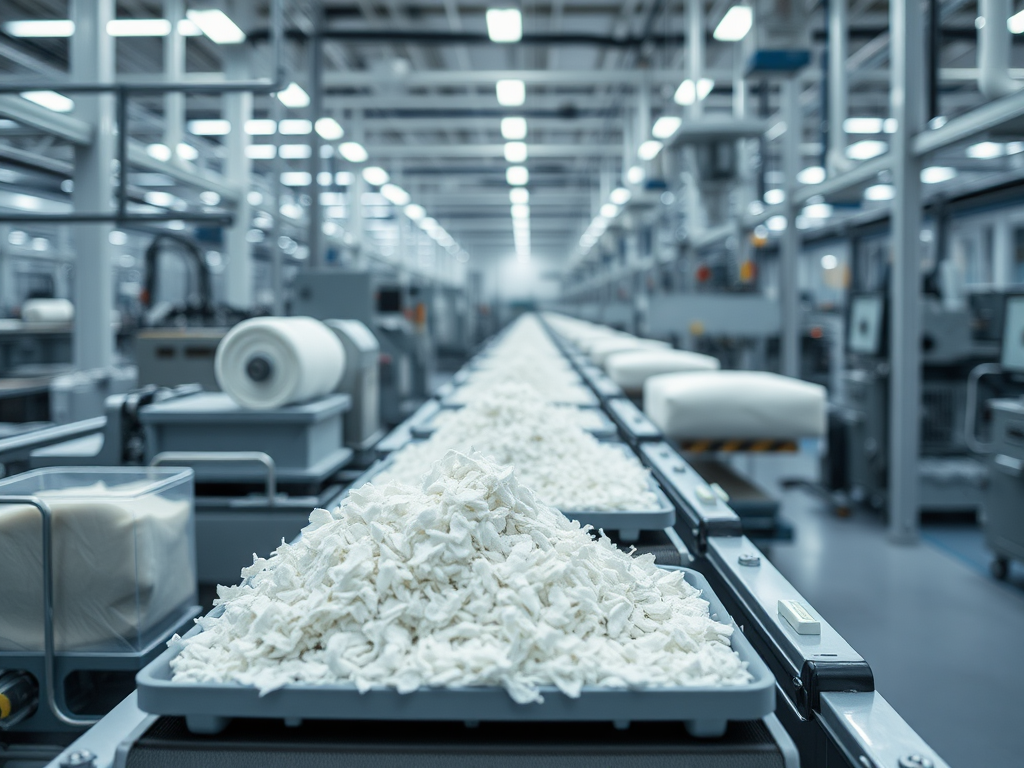Nylon, an iconic fabric that has transformed the textile industry, often evokes questions about its nature. As a material that has woven itself into the very fabric of our daily lives, it prompts debates about whether it is a natural fiber or a synthetic creation. Many consumers grapple with the sustainability of their choices, frequently muddled by misconceptions regarding nylon’s origins and properties. By understanding its chemical structure, historical context, and modern applications, we can debunk these myths surrounding this fascinating fiber. This article aims to unravel the truth about nylon and delineate why it deserves a mindful consideration in our fabric choices.
What is Nylon?

Nylon is a synthetic polymer, a fact that sets it apart from traditional natural fibers. Developed in the late 1930s by chemist Wallace Carothers, nylon was originally purposed for toothbrush bristles and later evolved into a textile for clothing, ropes, and countless industrial applications. Its inception marked a significant shift in the world of materials, particularly within the realm of fashion. Now a staple in wardrobes and households, nylon’s adaptability and resilience have rendered it indispensable. Despite its popularity, many still question its classification in the fiber family.
The process of producing nylon involves creating polyamides through a method known as condensation polymerization. This chemical reaction combines specific monomers to create long chains of molecules that form the fiber. Unlike natural fibers, which derive from plant or animal sources, nylon’s origins are strictly chemical. This distinction underlines the fact that nylon is fundamentally different from fibers such as cotton or wool, which boast organic origins. Therefore, understanding nylon’s synthetic roots is crucial when discussing its environmental impact and applications.
The synthetic nature of nylon leads to a composition derived from petrochemicals, primarily hexamethylenediamine and adipic acid. This can be compared to natural fibers that primarily consist of cellulose or protein. The production travels through several stages, each contributing to the nylon’s final characteristics—such as strength, elasticity, and resistance to wear. Below is a comparison between nylon and selected natural fibers highlighting their differences:
| Fiber Type | Source | Durability | Moisture Absorption |
|---|---|---|---|
| Nylon | Synthetic (Petrochemicals) | High | Low |
| Cotton | Natural (Plant) | Moderate | High |
| Wool | Natural (Animal) | High | Moderate |
Debunking Common Myths About Nylon

Despite its significance, misconceptions about nylon continue to circulate. Let’s clear the air on some frequently held beliefs:
- Myth 1: Nylon is a natural fiber.
This misconception arises from the fact that nylon is often blended with natural fibers. However, its fundamental properties are purely synthetic. - Myth 2: Nylon is harmful to the environment.
While traditional nylon is not biodegradable, innovations in recycling practices aim to mitigate its environmental impact. - Myth 3: All nylon products are low quality.
Just like any material, nylon varies in quality, with high-grade options that offer significant performance advantages.
Understanding these myths clarifies the nature of nylon and informs our choices regarding its use. With nylon utilized in everything from activewear to industrial applications, recognizing its true character is essential. Furthermore, contrasting nylon with other fibers illustrates the unique strengths it offers in durability, resilience, and versatility.
In comparison, synthetic fibers like polyester and spandex further expand our understanding of textile options. Polyester, another synthetic fabric, is often praised for its moisture-wicking capabilities. Spandex, known for its elasticity, complements nylon’s durability to create garments that are both functional and stylish. The interplay of these materials opens doors for advanced fabric technologies and applications, driving innovations in the fashion industry.
The Benefits of Using Nylon
The advantages of nylon extend beyond mere durability. One might wonder why this fabric continues to dominate several sectors, including fashion, aerospace, and healthcare. Here are some compelling benefits of nylon:
- Durability: Nylon boasts exceptional strength, making it ideal for products subjected to wear and tear.
- Resistant to Environment: Mold, mildew, and various chemicals cannot easily compromise nylon, adding layers of longevity.
- Versatile Applications: From clothing to ropes and parachutes, nylon’s adaptability caters to various industrial needs.
The Future of Nylon
Modern advancements in the textile industry point toward a bright future for nylon. With an increased focus on sustainability, scientists are exploring methods of creating recycled nylon that can significantly reduce environmental impacts. This shift is critical as more consumers demand eco-friendly alternatives. Trends toward biodegradable options are also emerging, which could revolutionize how we perceive nylon in the context of sustainability. The ongoing evolution reflects a broader commitment to responsible production and consumption.
Conclusion
In summary, nylon stands as a remarkable synthetic fiber that has reshaped various industries. By discerning its true nature—synthetic rather than natural—we can better navigate the complexities of textiles. Challenging misconceptions about nylon reveals the truth about its applications, benefits, and environmental implications. As we advance towards more sustainable practices, understanding nylon’s place in our lives becomes increasingly crucial. By making informed choices, we can appreciate not only the utility of nylon but also the ongoing efforts to innovate and improve its environmental standing.
Frequently Asked Questions
- Is nylon a natural fiber?
No, nylon is a synthetic fiber created from petrochemicals. - Is nylon environmentally friendly?
Nylon has a significant environmental footprint, but advancements in recycling and sustainability are improving its status. - Can nylon be biodegradable?
Traditional nylon is not biodegradable; however, there are new developments in biodegradable nylon variants. - How does nylon compare to cotton?
Nylon is generally more durable and resistant to wear than cotton, but cotton is breathable and more comfortable in hot weather. - Is nylon safe for skin?
For most people, nylon is safe and comfortable to wear; however, some may experience sensitivity or allergic reactions.
